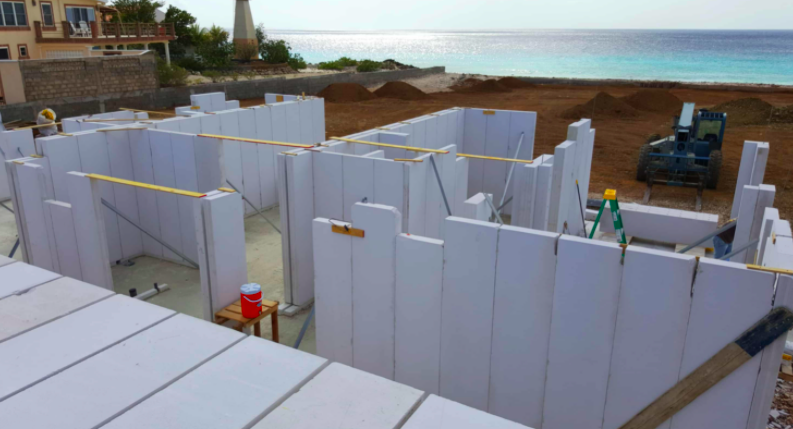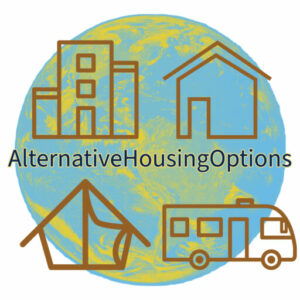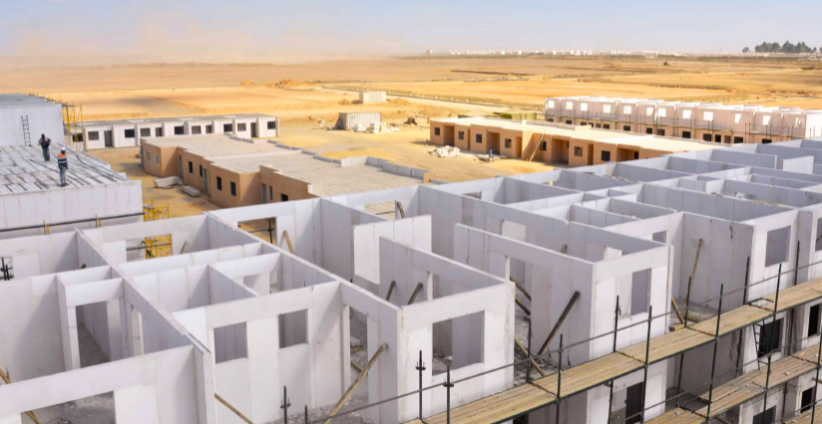With the housing market as crazy as it is, we love to investigate different housing materials and put together the information so readers can figure out if an alternative housing option would be right for them. Here at AlternativeHousingOptions.com, we recently wrote an article about hempcrete and were utterly blown away with all of the benefits and simplicity of the product. After the hempcrete article, a reader sent us a message asking if we would write about aircrete homes and pull together some design ideas. And here we are.
What is aircrete?

Aircrete is the clever combination of environmentally conscious construction materials mixed with good ol’ concrete that has been used to build structures since 6500BC and has continued to be perfected. Aircrete is an aerated, lightweight concrete made by adding foam, essentially soap, to the concrete, adding “bubbles” or airspace within the mixture. This creates alternative building materials that are easy to work with. Aircrete can be cut with a saw, drilled, and shaped in any way you wish. Aircrete continues to harden over time, making it ideal for long-lasting houses.
Traditional homes use a type of concrete is made using Portland cement and aggregates of coarse and fine sand, stone, and water. Other chemicals called admixtures are added to the concrete to control its setting properties for extreme environments such as low or high temperatures and excessive wind.
What can aircrete be used for?
- Homes
- Geodesic domes
- Offices
- Commercial buildings
- Precast Blocks, Panels, and Slabs
- Insulating Roofs / Floors
- Insulating Underground Pipes
What are the benefits of building with aircrete?

- Fireproof & Waterproof – Fire and water are the two most damaging elements that homes come in contact with regularly (We can attest, there is nothing worse than water damage from leaking fixtures and pipes!) Stick frame homes cannot withstand water, promoting the quick spreading of flames.
- Affordable – Material costs are at an all-time high along with the crazy housing market. There is a real need for alternative housing options. Aircrete is more affordable than other traditional materials even before factoring near nonexistent maintenance costs.
- Thermal Efficiency – While aircrete in and of itself is not the most energy-efficient material, once laminated with a reinforcing fabric, it is one of the most efficient. In addition, most aircrete homes are built with a seamless construction between the floors, walls, and roof, which eliminates any thermal bridges and minimizes energy loss.
- Sustainability – Sustainable and environmentally friendly building materials are more critical than ever. Aircrete is a reusable and recyclable material.
- Pest Proof – Aircrete is recommended by many builders in areas where pests pose a genuine threat to the long-term stability of a home. Aircrete is seamless, minimizing the entry points and making it nearly impossible for insects to enter. Another benefit of aircrete is its imperviousness to structure damaging pests such as termites.
- Acoustic Insulation – The sound transmission is less due to aircrete’s porous nature.
- Structural Performance – Aircrete hardens over time and is almost as strong as concrete when covered with a plaster finish.
- Lightweight – Aircrete blocks are light enough for a child to carry, making them ideal for individuals to use in DIY builds.
- DIY building possible – whether using the blocks or as a formable slurry similar to cob or adobe, you can DIY an aircrete house by hand or with forms.
What are the disadvantages of aircrete?
- Lack of strength – Aircrete does not have the compressive strength of concrete. Concrete is stronger overall due to the aggregates mixed into the cement.
- Can become brittle – Aircrete can become brittle if the correct mix of foam and aggregate is not used. Domagala has step-by-step instructions on how to mix aircrete property for construction purposes.
How much does aircrete cost to build?

According to one estimate, a 1000 square foot dome built 4-inches thick would cost about $4000. Another builder estimates that aircrete costs about $9 per square foot.
It is not easy to calculate aircrete cost outright because of thickness, dimensions, type of home, and material used but here is a basic idea.
- A concrete cinder block costs an average of $11 per sq ft. For a 1000 sq ft building that would total $11,000.
- AirCrete block cost and average of $4 per sq ft. For 1000 sq ft building that would cost $4,000.
This varies depending on where you get your materials and if you DIY the blocks or buy them. Before you start your project, be sure to research the cost accordingly.
The cost of labor and materials needed can be the actual savings. The weight of an AirCrete block is about 80% lighter than a concrete cinder block. You or your crew could easily lift and move blocks with a simple rope pulley system or easily carry them up a ramp.
Whether you’re building with: formwork filled with aircrete to make a large building structure, domes frame that you cover with aircrete like you would adobe or cob to make a house, or make aircrete blocks and build as in regular masonry; you’ll find that aircrete is cost-effective, durable, and can create some impressive structures.
Here are three aircrete home design ideas for a large or tiny house build.
Aircrete dome

Aircrete blocks

Forms filled with Aircrete
In a formwork structure, the formwork is erected first. After all, pipes for water and electricity are put in place; the airCrete is poured. The result is a strong, bugproof, fireproof, earthquake resistant, wind and water-resistant structure that is low cost and durable. Aircrete has been used in Europe and Asia and is very common for housing.
Aircrete homes are built all over the world. Aircrete may not have the same strength as concrete, but its environmental and cost-effectiveness can outweigh the compressive strength issues. To explore other alternative housing options, visit our 25+ ideas article.


